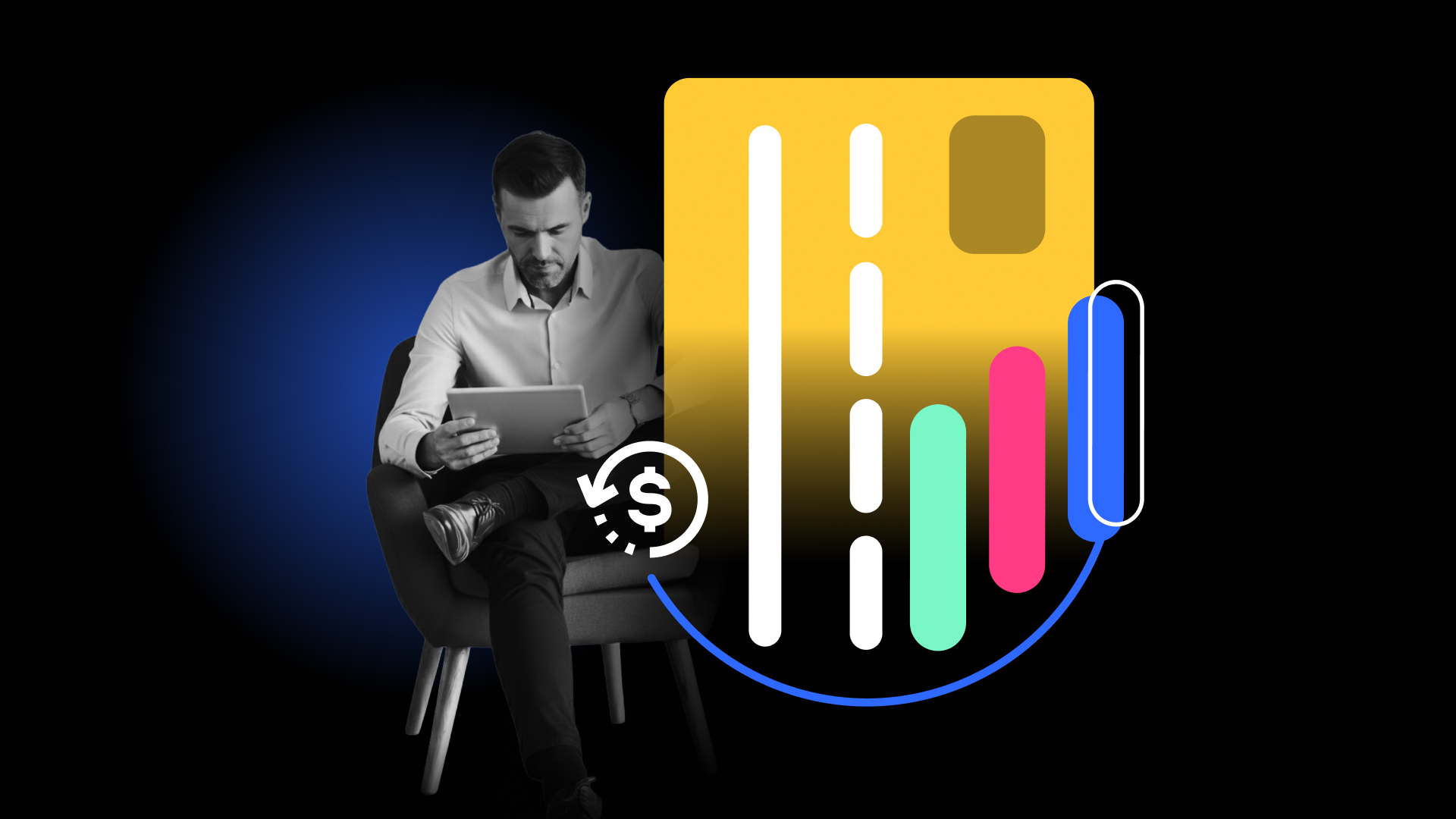The world of online shopping has put convenient purchases a finger tap away, but it’s also created new challenges for businesses. 17.6% of all products ordered online end up being returned. That translates to $247 billion in merchandise having to be sent back and processed. This surge in returns hurts e-commerce businesses, particularly when it comes to dealing with chargebacks, refunds, and fraud. In 2023 alone, the total cost of chargebacks was estimated to be $100 billion.
To protect your business’s reputation, reduce costs, and prevent financial losses, it pays to understand the key differences between handling chargebacks and refunds. Read on to learn more about these processes and discover the best ways to protect yourself from both chargebacks and refund fraud.
What is a Chargeback?
A chargeback is a financial mechanism designed to protect consumers from unauthorized or fraudulent transactions and allows the reversal of a completed transaction. Chargebacks are initiated when a customer contests a charge on their credit or debit card statement with their issuing bank.
When a chargeback is initiated, the funds are taken from the merchant’s account and returned to the customer. While merchants do have the opportunity to dispute chargebacks, they must provide compelling evidence to prove the transaction was legitimate, which can be challenging with online purchases.
What is a Refund?
A refund is a financial transaction initiated when a customer requests the return of funds or sends back goods to a merchant, who then transfers the purchase amount back to the customer’s account.
This streamlined approach to addressing customer issues often results in quicker resolution times and fewer complications for both parties. Merchants maintain more control over the refund process, allowing them to manage customer relations effectively and potentially preserve the business relationship.
For businesses, offering a clear and efficient refund policy can serve as a valuable tool in customer satisfaction and retention strategies. It demonstrates a commitment to customer service and can help build trust in the brand.
What are the Differences Between Chargebacks and Refunds?
While chargebacks are bank-initiated and involve multiple parties, refunds are merchant-driven and typically involve only the customer and merchant, making them simpler and often more cost-effective for businesses.
Chargebacks and refunds also differ in a number of other ways. By recognizing these distinctions, merchants can develop more effective strategies for handling customer disputes, potentially reducing financial losses and preserving valuable customer relationships.
Let’s examine these differences to understand how to manage customer disputes effectively:
-
Initiation
-
-
- Chargebacks: Initiated by the customer’s bank or credit card issuer following a customer dispute.
- Refunds: Directly processed by the merchant in response to customer requests.
-
-
Parties Involved
-
-
- Chargebacks: Typically involve four entities: customer, merchant, issuing bank, and acquiring bank.
- Refunds: Usually involve only two parties: customer and merchant.
-
-
Resources Required
-
-
- Chargebacks: Demand significant resources, including extensive customer support, longer processing times, and potential contestation efforts.
- Refunds: Generally require fewer resources and can be processed more quickly.
-
-
Financial Impact
-
-
- Chargebacks: Result in lost sales, processing fees, administration costs, and can negatively affect the merchant’s chargeback rate.
- Refunds: Lead to lost sales, but typically don’t incur additional fees or penalties.
-
-
Outcome for Customers
-
-
- Chargebacks: Customers retain the purchase cost and sometimes the item as well if it’s a first-party fraud case.
- Refunds: Customers usually return the item as part of recovering the purchase cost. This helps merchants cut their costs and maintain inventory control.
-
-
Merchant-Customer Relationship
-
-
- Chargebacks: Formal and potentially adversarial, which can strain customer loyalty.
- Refunds: Preserve goodwill and demonstrate a commitment to amicable resolution.
-
-
Complexity and Time
-
- Chargebacks: Involve a complex, time-consuming process due to multiple parties and formal dispute mechanisms.
- Refunds: Can be processed swiftly, leading to faster resolution and higher customer satisfaction.
How Chargebacks are Used for Fraud
While chargebacks were originally intended to protect customers from unexpected charges and encourage the use of credit cards, fraudsters have found ways to exploit this system, causing harm to legitimate merchants. The main types of chargeback fraud are:
-
First-Party Fraud
This type of fraud (also known as friendly fraud) involves customers disputing valid charges, by claiming non-receipt of goods or that purchases were unauthorized. Merchant losses are reported at $50 billion a year, and nearly half (42%) of Gen Z have carried out first-party fraud.
-
Third-Party Fraud
Also known as true fraud, this involves bad actors using stolen credit card information to make purchases. The transaction is later discovered by the legitimate cardholders, who then file chargebacks. In these cases, merchants struggle to prove whether the customer authorized the transactions and frequently loses the dispute.
A chargeback ratio of even just 1% can leave a merchant facing financial penalties, additional requirements, and even the potential of losing the right to process card payments. Robust fraud prevention and chargeback management strategies are crucial to keeping chargebacks from hurting your bottom line and protecting your company’s reputation.
How to Avoid Chargebacks for Your Business
While completely eliminating chargebacks may be impossible, implementing effective strategies can significantly reduce their occurrence and mitigate financial losses. By encouraging dissatisfied customers to seek refunds rather than initiating chargebacks, you can reduce your financial losses and maintain positive customer relationships.
With these strategies, you can avoid chargebacks and reduce your financial losses:
-
Proactive Customer Service
Address customer concerns promptly and resolve issues before they escalate. Maintain a willingness to offer refunds when appropriate, demonstrating your commitment to customer satisfaction.
-
Clear Policies
Establish and communicate a clear, straightforward return and refund policy. This transparency sets proper expectations and minimizes misunderstandings or potential abuse.
-
Efficient Refund Processing
Develop a simple, fast, and customer-friendly refund process. This approach builds trust and encourages customers to bring disputes directly to you rather than their bank.
-
Monitor Customer Feedback
Regularly review and act on customer feedback to improve products, services, and processes. This proactive approach helps create positive experiences and reduces the likelihood of chargebacks.
-
Use Technology
Partner with a reputable fraud prevention solution to minimize fraudulent chargebacks. Take advantage of advanced technologies such as behavioral analysis and multi-factor authentication (MFA) to enhance security and detect unusual activity.
-
Train Your Team
Invest in comprehensive training for your customer service team. Equip them with the knowledge and skills to handle refund requests and customer disputes effectively, reducing errors and preventing escalation.
Learn more about how you can access comprehensive protection against payment fraud and costly chargebacks.
The Top 8 Reasons Why You Should Proactively Prevent Chargebacks
Minimizing chargebacks and making refunds more accessible not only safeguards your bottom line, but also cultivates a customer-centric approach that can set your business apart. Let’s explore the eight most compelling reasons why prioritizing refunds and chargeback prevention should be at the forefront of your business strategy:
-
Simplifies resolution
Refunds involve fewer parties and less formal processes compared to chargebacks, streamlining issue resolution.
-
Reduces costs
Chargebacks incur significant fees and penalties, while refunds are generally more cost-effective for merchants.
-
Preserves relationships
Instead of forcing customers to rely on a third party for assistance, offering refunds helps maintain positive customer relationships by showing a willingness to resolve issues directly.
-
Protects reputation
Managing refunds quickly and efficiently enhances your business’s reputation for providing good customer service.
-
Prevents financial losses
Chargebacks often result in the loss of both the sale value and the product, while refunds may allow for product recovery.
-
Lowers chargeback ratio
Proactively offering refunds keeps chargeback ratios low, protecting your merchant account status.
-
Speeds up resolution
Refunds typically resolve issues more quickly than chargebacks, reducing stress and workload for your team.
-
Avoids legal risks
Chargebacks can potentially escalate into legal challenges, whereas refunds generally avoid such complications.
ChowNow significantly reduced their chargeback rate by 99% after partnering with Sift. This enabled the online ordering platform to slim down their fraud management operations to just 15 hours per week and achieve savings of $1 million.
Understanding Refund Fraud
While refunds are generally preferable to chargebacks, businesses must also be vigilant against refund fraud. This type of fraud occurs when a customer makes a legitimate purchase, receives the goods or services, and then dishonestly demands a refund from the merchant.
Common forms of refund fraud include:
- Non-delivery claims: Customers falsely assert they never received the item, despite evidence of delivery.
- Defective product claims: Customers dishonestly report issues with a perfectly functional product.
- Unauthorized transaction claims: Customers deny making a purchase, falsely attributing it to an unauthorized third party, such as a hacker or family member.
It’s critical to recognize that refund fraud is a type of friendly fraud, perpetrated by the customer rather than an external party. This presents a unique challenge for merchants, as these transactions often appear legitimate on the surface.
The difficulty in addressing refund fraud lies in distinguishing between genuine customer issues and fraudulent claims. However, failing to implement measures to combat refund fraud can result in substantial losses for merchants, affecting both inventory and revenue.
How To Stop Refund Fraud in its Tracks
All industries can be impacted by refund fraud. To protect their business, merchants must strike a balance between maintaining customer satisfaction and implementing safeguards against fraudulent refund requests. This may involve careful documentation of transactions, clear communication of policies, and the use of advanced fraud detection technologies.
Here are key steps you can take:
-
Maintain Accurate Records
Keep detailed, up-to-date transaction records. Regularly reconcile refunds with sales to prevent error-based refunds and identify suspicious patterns.
-
Implement Identity Verification
Consider robust identity verification processes for customers requesting refunds. This can help ensure the legitimacy of refund claims without compromising the customer experience.
-
Balance Security and User Experience
When implementing security measures, strike a balance between fraud prevention and customer convenience. Excessive friction in the refund process may deter legitimate customers and potentially harm your business reputation.
-
Leverage Advanced Technology
Embrace AI-powered fraud detection tools, such as those offered by Sift. These sophisticated systems can analyze transaction patterns, customer behavior, and other relevant data to identify potential refund fraud while maintaining a smooth user experience.
By implementing these measures, you can significantly reduce the risk of refund fraud and create a secure environment that protects your business without alienating honest customers.
Why Sift Offers the Best Chargeback and Refund Fraud Management Solution
In the ongoing debate regarding chargebacks vs refunds, it’s essential to recognize that while both options allow customers to recover funds after a transaction, chargebacks often result in more negative outcomes. These include diminished customer experiences, prolonged resolution times, and substantial fees for merchants. To resolve these issues, many organizations are turning to advanced technological solutions like Sift’s chargeback fraud solution.
Sift’s comprehensive approach to managing chargebacks and refund fraud offers several key advantages:
-
Streamlined Dispute Resolution
Sift provides an intuitive, unified platform that simplifies the chargeback management process, allowing for more efficient handling of disputes.
-
Intelligent Prioritization
Leveraging automation, Sift offers recommendations to prioritize chargebacks based on their value, ensuring that high-impact cases receive prompt attention.
-
Revenue Protection
Create effective responses and maintain healthy win rates with an intelligent workspace and expert guidance. Build even stronger protection with inquiries that block potential chargebacks, and alerts that keep dispute rates low.
By employing these innovative features, you can significantly reduce the negative impacts associated with chargebacks, ultimately improving customer satisfaction and protecting your revenue.
For those interested in staying up to date with the latest developments in payment fraud and mitigation strategies, Sift’s Q1 2024 Digital Trust & Safety Index report offers valuable insights into current trends and best practices in the field.







